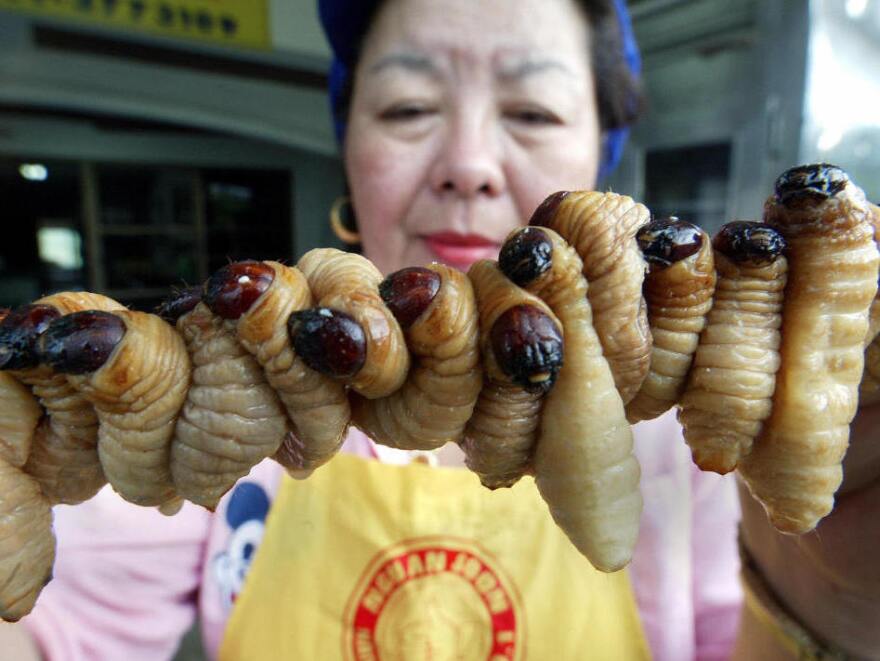When it comes to creepy crawly things on your dinner plate, getting past the "ick" factor is the big hurdle. Entomaphagy — eating insects — is common in most of the world, but in North America and Europe it's considered, well, gross.
Now it's being proposed as a cheap food source and a way to save the planet as the world population explodes. Crickets need less feed, less land and emit fewer greenhouse gases than cattle.
Nate Erwin, manager of the Insect Zoo at the Smithsonian's Museum of Natural History, says grasshoppers are 60 percent protein and about 6 percent fat, while beef is about 18 percent protein and 18 percent fat. For 100 pounds of grain feed, he says, you'll get 10 pounds of beef, but 45 pounds of crickets. Plus, crickets are high in calcium.
Before the colonists showed up, Native Americans had no problem with the occasional bug buffet. Then we domesticated all those big farm animals and now eat insects only when we don't know it.
Since it's impossible to get every tiny bug out of food before it's processed, the Food and Drug Administration sets limits. So frozen spinach is acceptable with a few mites and larval fragments. Think of it as extra protein.
The rest of the world is far less squeamish about eating bugs. They eat palm grubs in Uganda, fried dragonflies in Indonesia and tarantulas the size of dinner plates in Venezuela. China has a huge insect menu, including water beetles marinated in ginger and soy sauce, deep-fried scorpions on crispy rice noodles and caterpillar fungus soup.
Yet there have always been bug eaters among us. In the 1990s, the Insect Club in Washington, D.C., served dry-roasted crickets along with the party mix. Even today, you can get a good grasshopper taco in D.C.
Erwin says he and his insect zoo colleagues like a good bug feast. During the last 17-year cicada invasion, they fried them, roasted them, sauteed them and dipped them in chocolate.
It's all mindset. Hissing cockroaches molt, like soft shell crabs. Which are you more likely to consider a delicacy? Does it help to know that hissing cockroaches have a diet of fruits and vegetables while crabs are bottom feeders and cannibals? Probably not.
Every year, the Anthropology Club at Washington College in Chestertown, Md., has a pre-Halloween insect bake sale. This year it was cicada nachos, grasshopper kabobs and rootworm beetle dip. The club's goal is to show that insects can be party food, not just something on Fear Factor. It wants to help people get beyond the "ickiness."
NPR commentator and Kitchen Window contributing editor Bonny Wolf is working on a book about the foods of Maryland's Eastern Shore.
Copyright 2023 NPR. To see more, visit https://www.npr.org.








